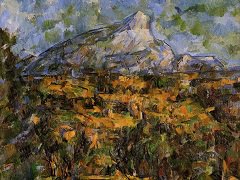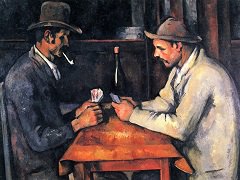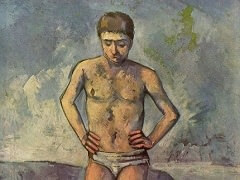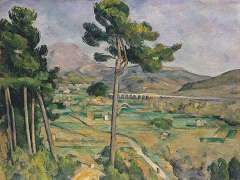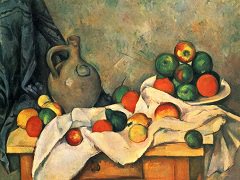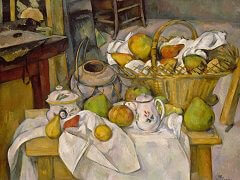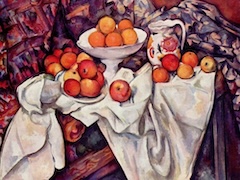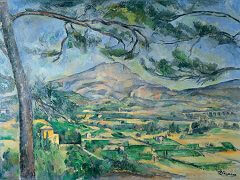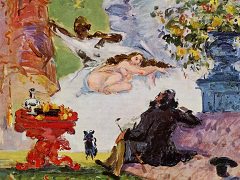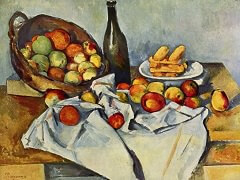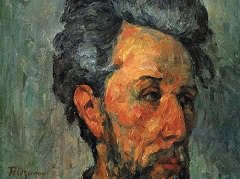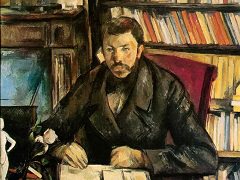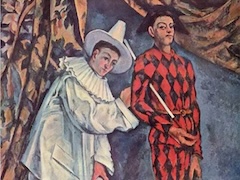Woman with a Coffee Pot, 1895 - by Paul Cezanne
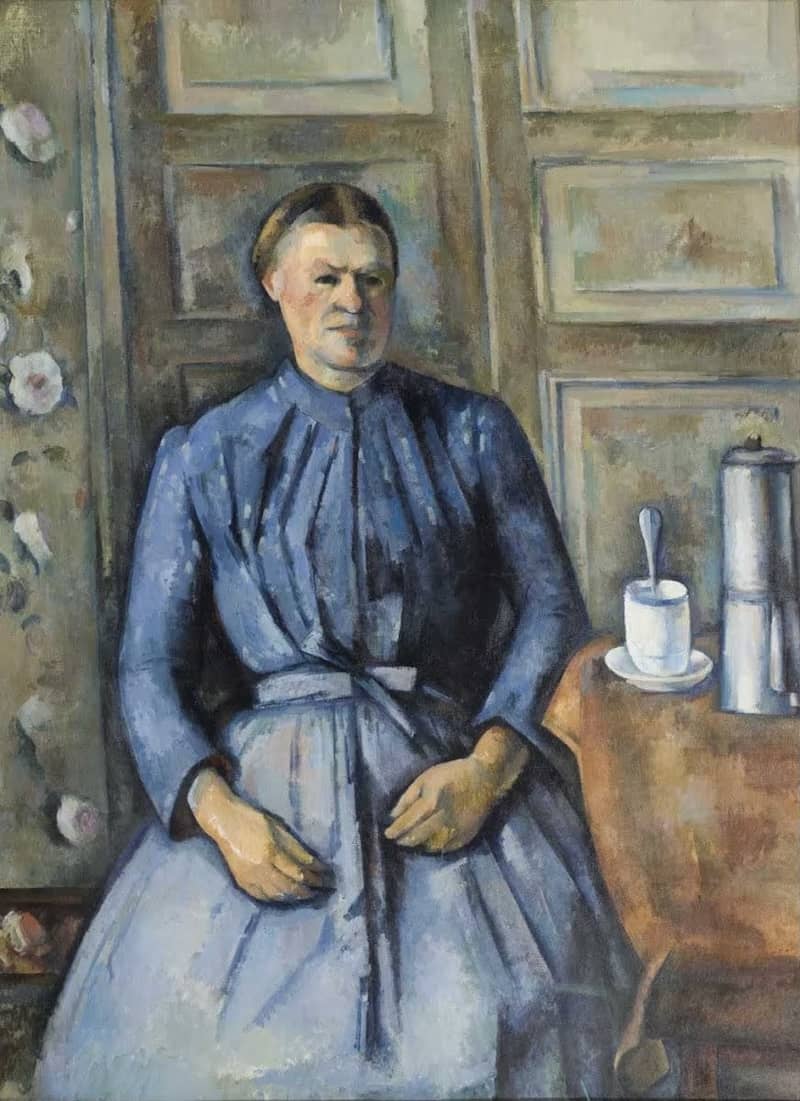
According to one of her descendants, the model was a servant, who would have posed for the sittings in Paris, not at the Jas de Bouffan. This may be the reason for the stiff, rather uneasy attitude of the sitter. The resemblance in the pose to some of the portraits of Hortense Fiquet, who has sometimes been identified as the woman with the coffee pot, may suggest that Cezanne deliberately wanted to keep an emotional distance from his model. The expression on her face is enigmatic. Lionello Venturi noted, quite accurately, that 'she is standing there as firm as a tower.' The thick, dark hands are accustomed to domestic work, and their simplified shape makes them look like barely trimmed blocks of wood or lumps of inanimate flesh. The model's body is completely hidden under the full but severe blue dress, the geometric folds of which are reminiscent of the sharp reliefs of Mont Sainte-Victorie. The lifelessness is compensated for by the vibrant rendering of the composition and the light, which modifies the colors. Here and there, spots of while lift catch the folds of the bodice.
The dress itself is painted in shades of blue, with green and Parma violet, which give it a voluptuousness that is absent from the woman's figure. There is a sensuousness in the thick paint of the milky white coffee cup and the silver-grey of the little spoon and the coffee pot.
The still life, placed next to the woman, is composed of vertical shapes and adds no sentiment to the painting. This is not a casual coffee break. These elements are simply there to 'correct' the verticality of the figure in relation to its surroundings - a background of moulded wooden panels (either a cupboard or a door) and a wall covered with a flowery wallpaper, which seems slightly off-centre on the left. This thoughtfully balanced composition echoes the image of immutable time, symbolized by this large hieratic figure. The same sculptural monumentality is also found in some of Manet's portraits from this period.


